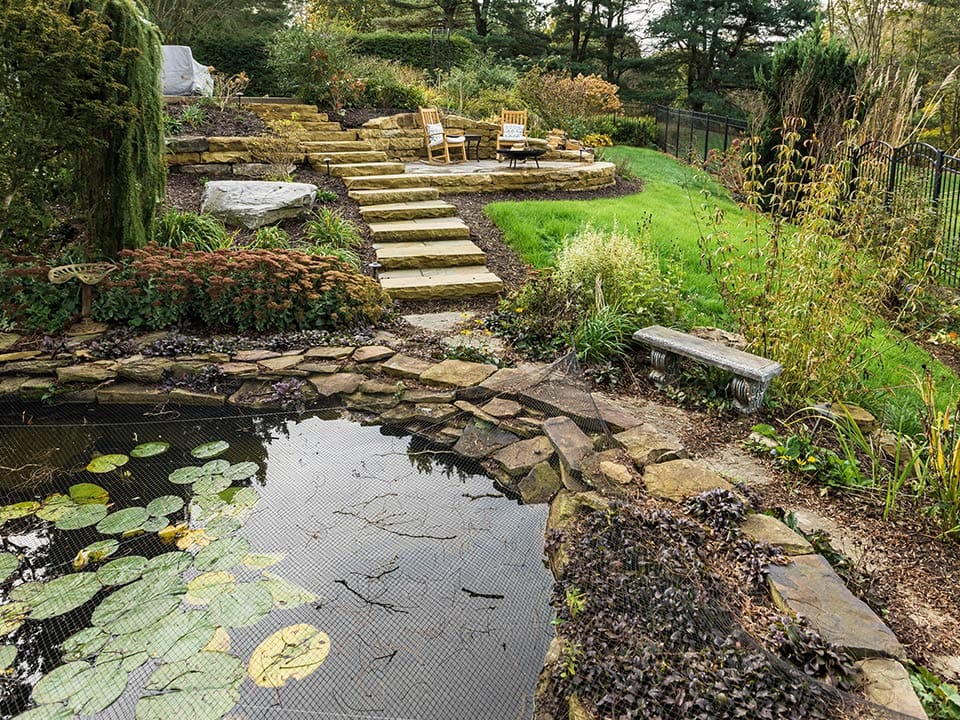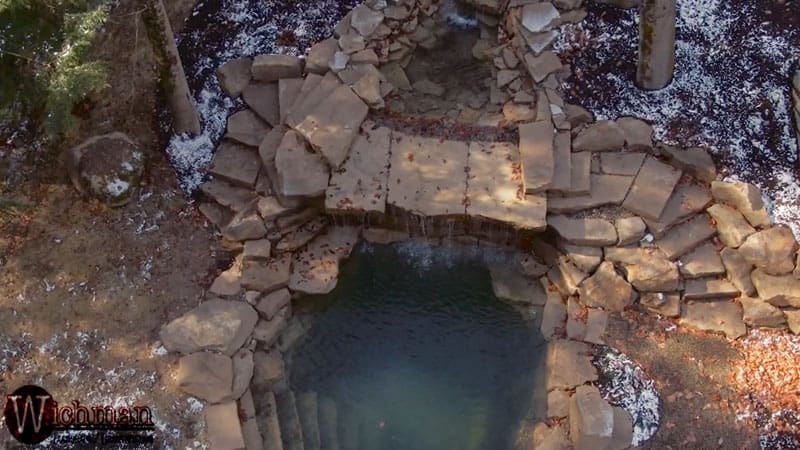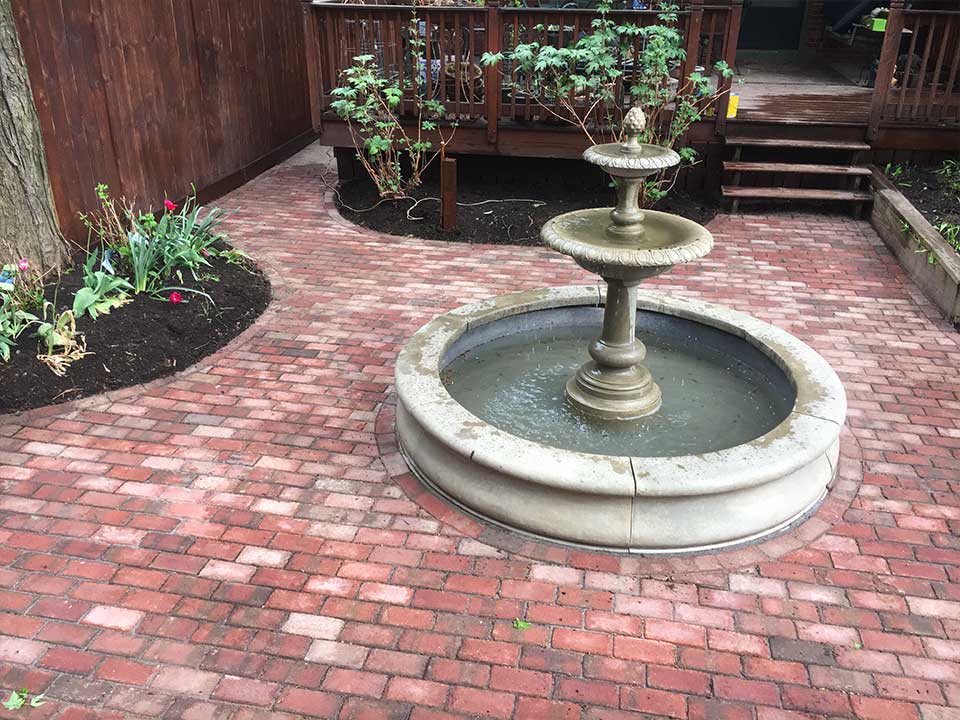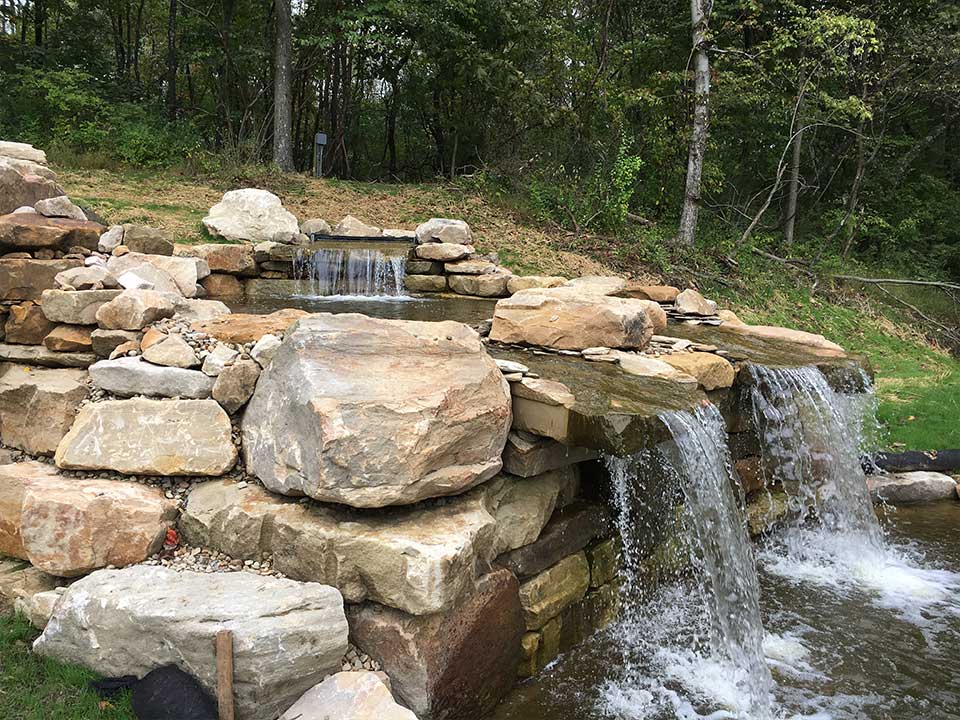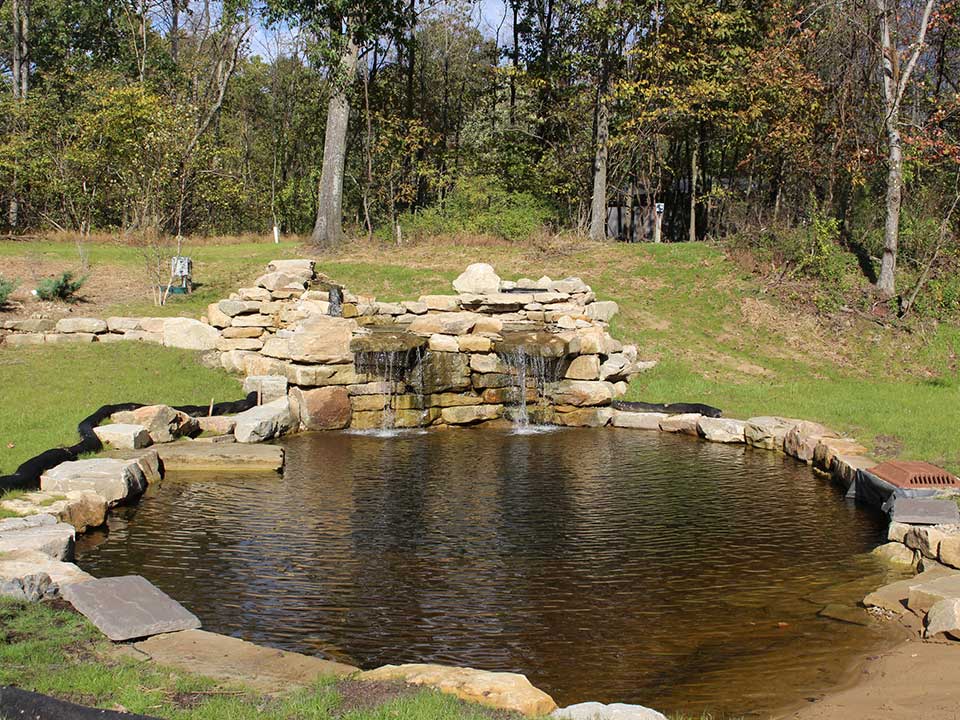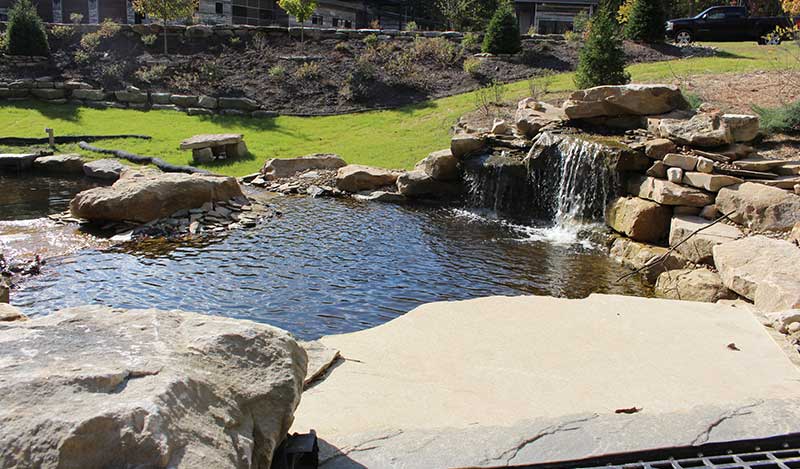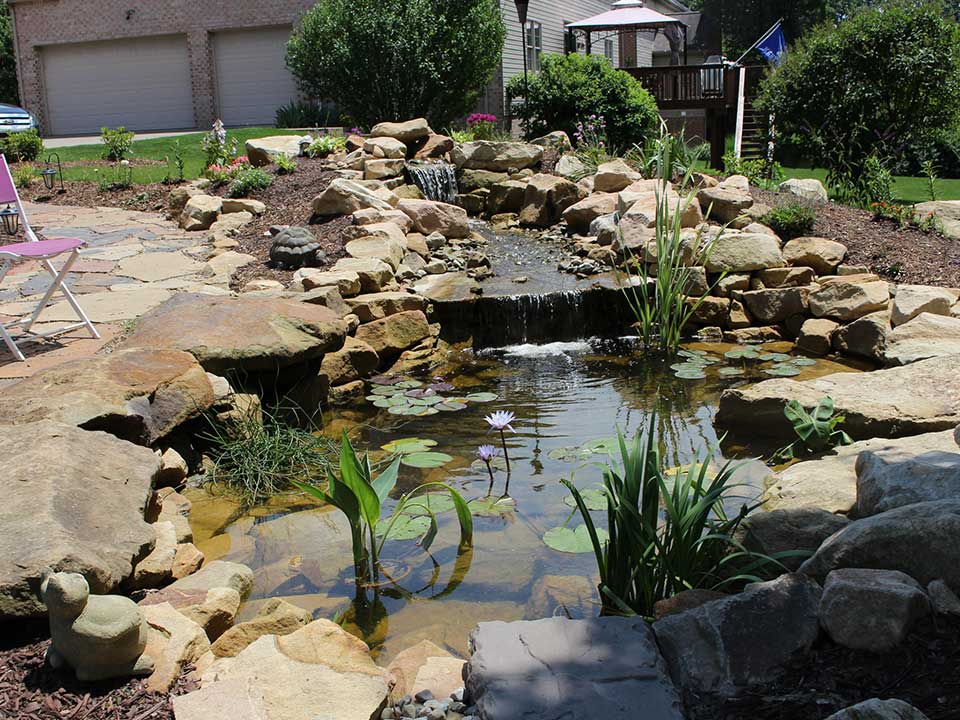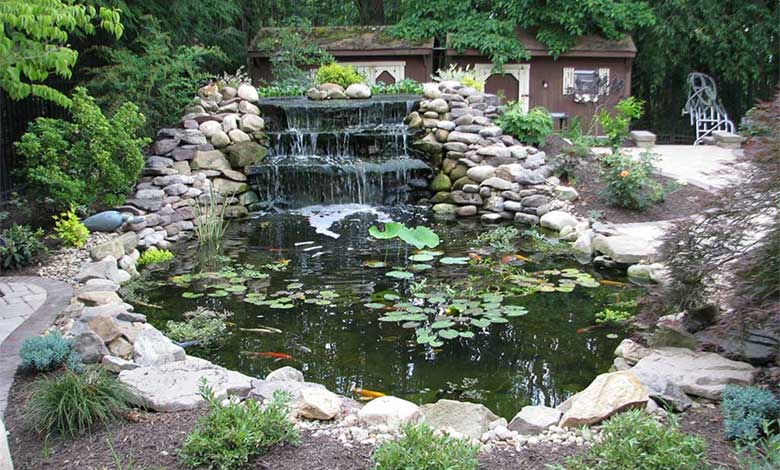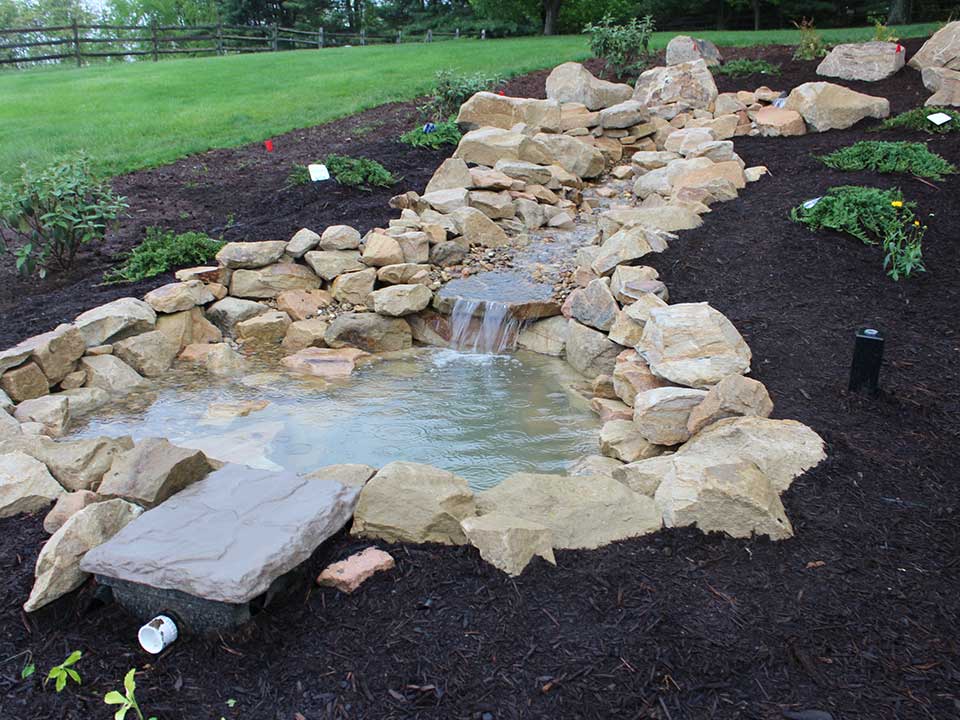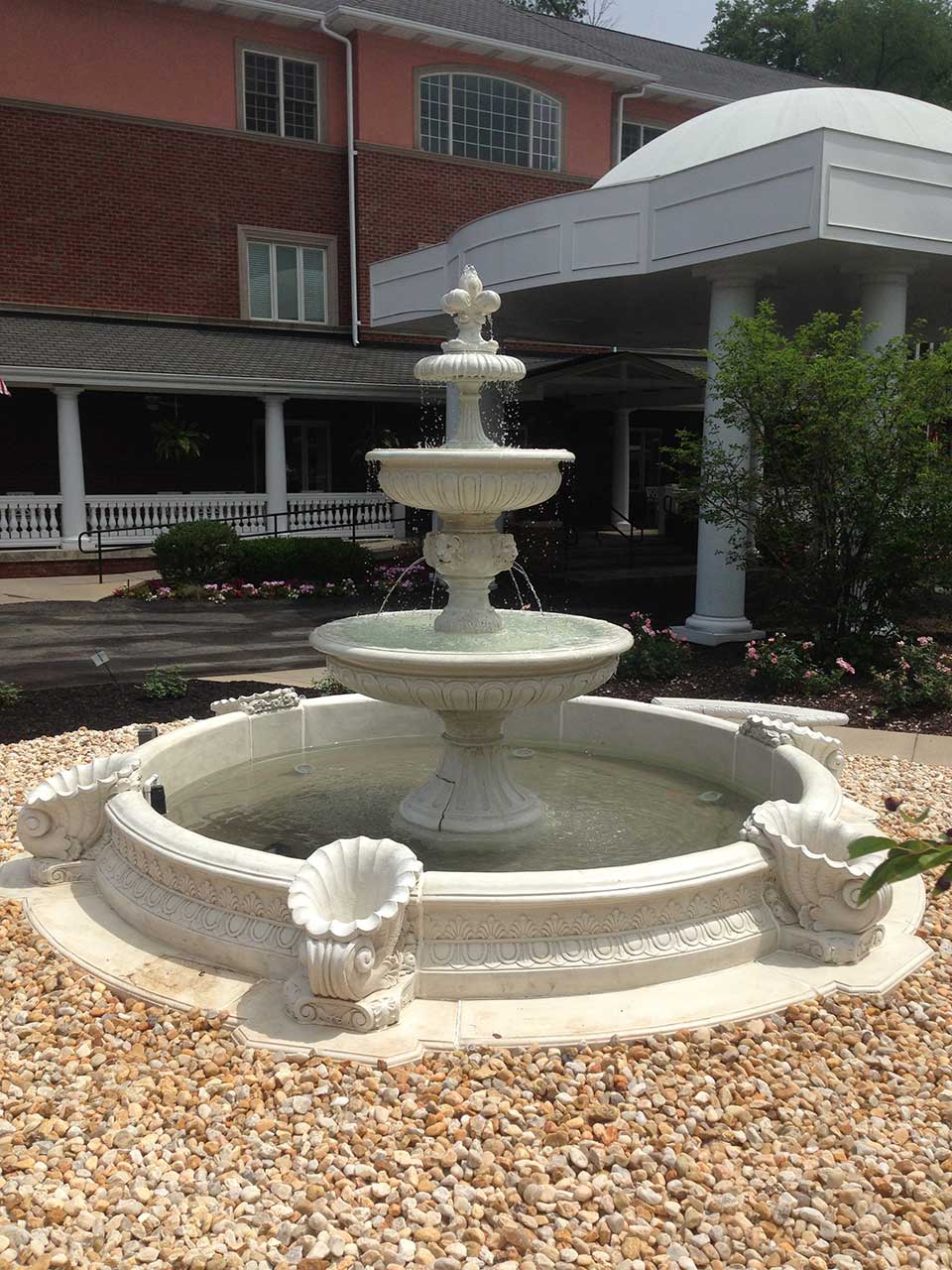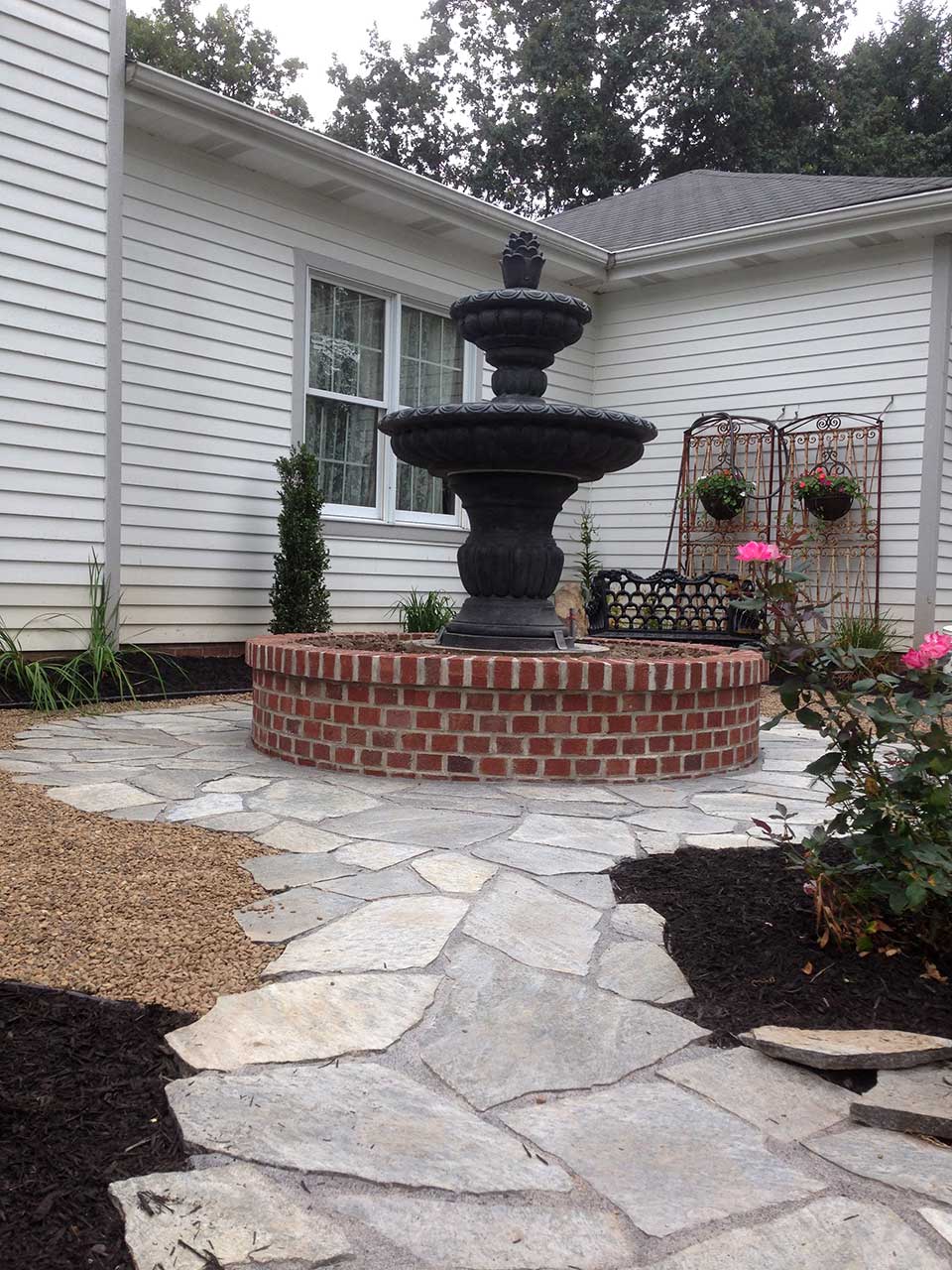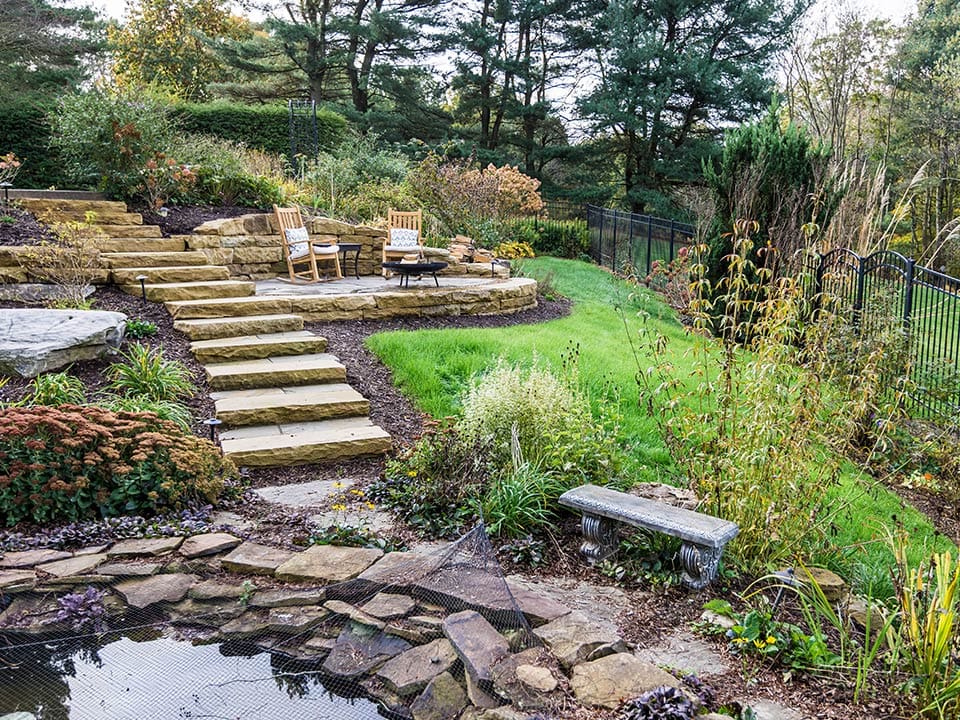
We’re Your Trusted Waterfall & Pond Contractor in Pittsburgh, PA
There’s something magical about the sound of flowing water—it instantly transforms any outdoor space into a peaceful retreat. Whether it’s a fountain, a koi pond, or a cascading waterfall, a custom water feature can elevate your backyard into a serene oasis you’ll never want to leave.
At Wichman Landscape Construction, we specialize in designing and installing natural-looking water features that blend seamlessly into your landscape, creating a visually stunning and relaxing atmosphere.
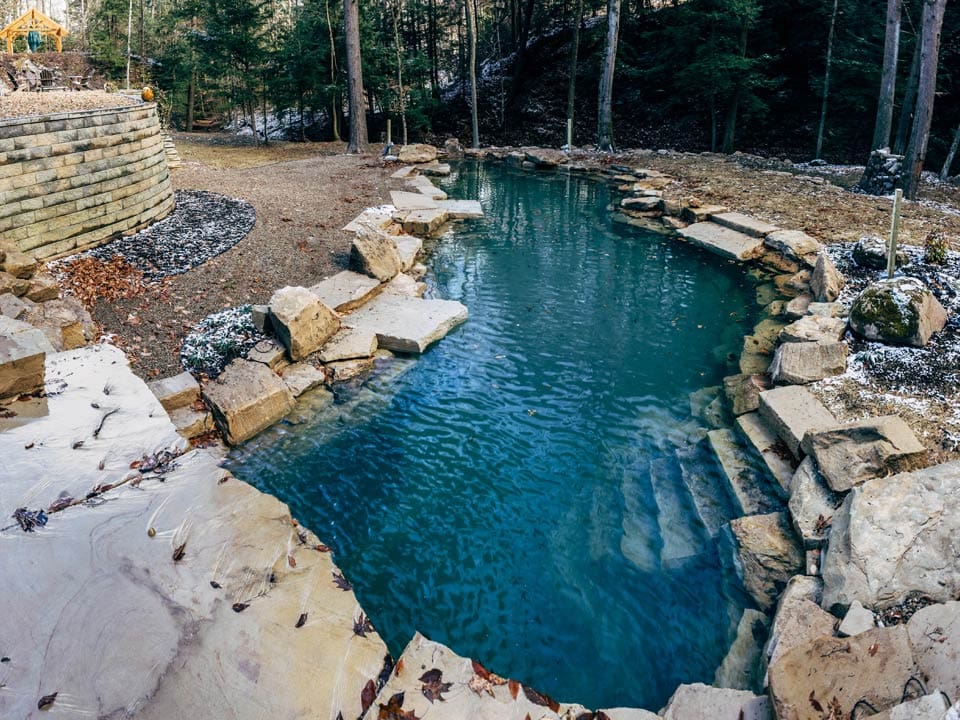
Natural-Looking Water Features That Blend In Beautifully
The best water features feel like they’ve always been there. Our team ensures your pond, fountain, or waterfall flows harmoniously with your existing landscape.
- Seamless Integration – Using materials like boulders, gravel, and driftwood, we create features that mimic nature.
- Smart Design – Every pond and waterfall is built to the right scale for its surroundings.
- Low-Maintenance Construction – Lined with waterproof materials for longevity and easy care.
In Pittsburgh’s climate, it’s essential to design deep enough ponds to prevent freezing and ensure proper water circulation for a healthy, vibrant feature year-round.
Waterfalls
A backyard waterfall creates a soothing atmosphere, transforming your outdoor space into a peaceful retreat where you can relax with friends and family. The sound of falling water calms the senses while enhancing the beauty of your landscape. Beyond its aesthetic appeal, a waterfall offers practical benefits: the constant movement helps keep pond water clear and reduces algae growth, while naturally aerating the water to support healthy plants and koi.
Waterfalls can be designed in either formal or informal styles. Formal waterfalls feature clean lines and geometric shapes, often built with brick, concrete, or cut stone to create a stair-step effect. Informal waterfalls mimic nature, using boulders, gravel, and driftwood to create a look that blends seamlessly with the landscape. The style of your pond, garden, and home will help determine which approach is best for your space.
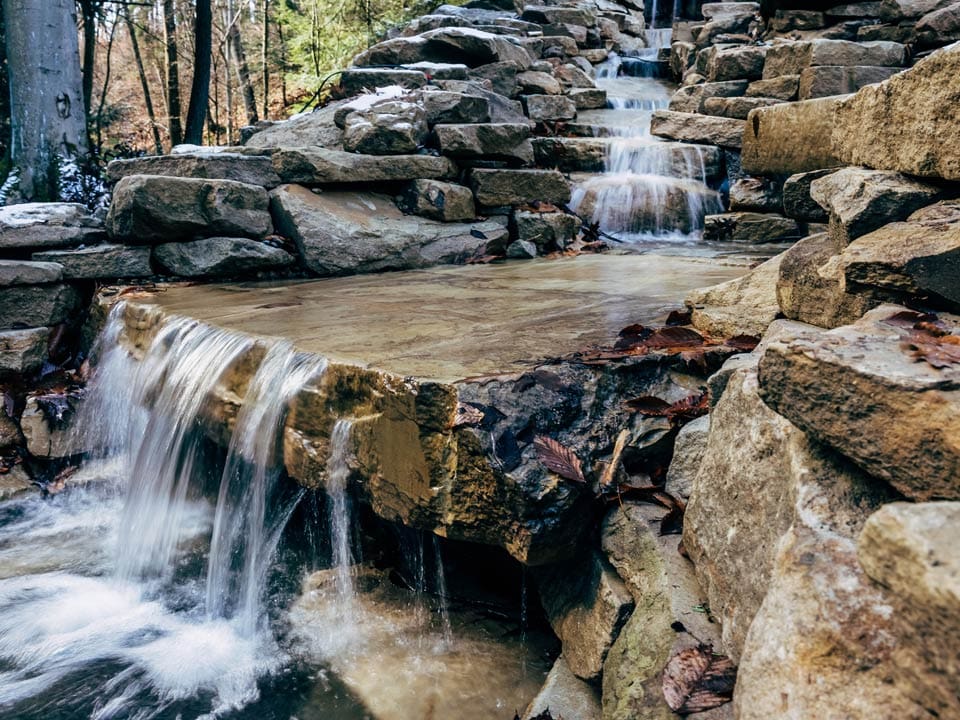
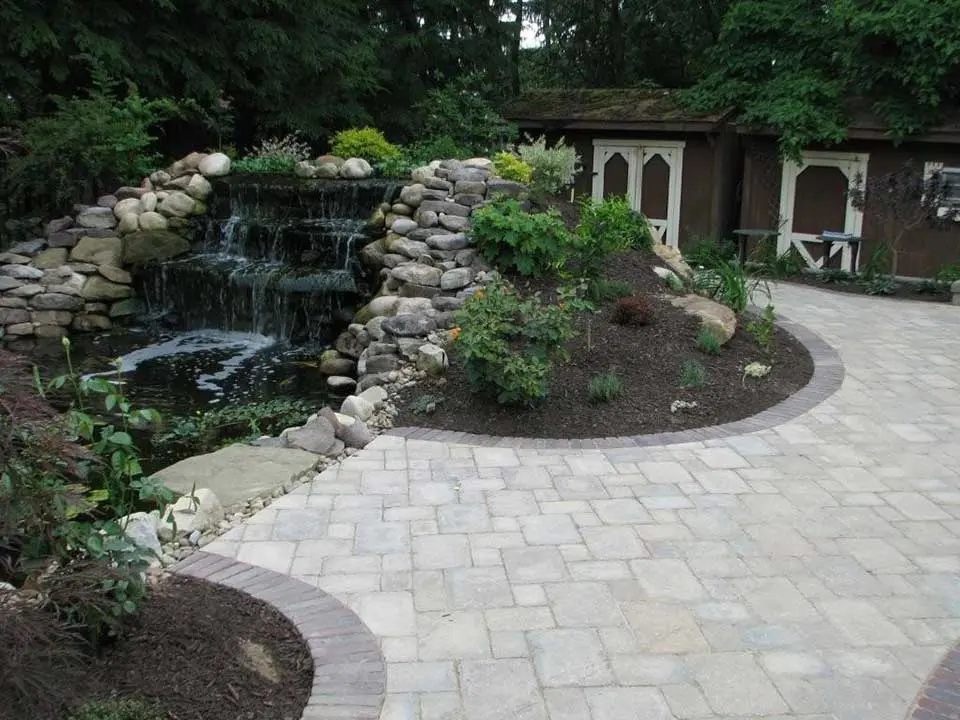
WATER GARDENS & KOI PONDS
Water Gardens
People of all ages love water gardens for their natural sights and sounds. When designing a water garden, aim to mimic nature. The shape of the pond should be organic and irregular, real rocks and boulders should surround the water, and aquatic plants should be grown. Sound is also a crucial part of a water garden. Hidden circulation pumps, a cascading waterfall or flowing stream can all be used to create water movement which then produces a melodic and relaxing sound.
Since water gardens have such a natural appearance, they fit well into informal gardens. Informal gardens typically have curved lines, meandering paths and casual planting beds. A water garden may also be right for your yard if you live in a natural setting, such as meadow fields, or the woods.
When designing a water garden get your inspiration directly from nature. Consider to mimic nature
- by lining 40-60% of the shoreline with rock – use sand, gravel, mulch, plants or driftwood for the remaining shoreline
- use river rock in the water and use mountain stone for edging
- place rocks at irregular intervals (avoid patterns)
- vary the width and depth of your water garden
Our Pond & Waterfall Installation Gallery
Listen to What Our Clients Have To Say
Koi Pond Design
A Koi pond must be properly designed in order for the fish to thrive. Most professionals recommend that a pond intended for Koi meet a certain set of requirements in order to provide the best habitat for the fish. Generally, Koi ponds are larger than fishless ponds.
Koi pond waterfall size requirements:
- 3+ feet deep minimun in Pittsburgh
- 25 sq. ft. of pond per koi
- No less than 1,000 gallons of water
It’s important to realize that fish need shade. If your pond location is in direct sunlight consider growing floating plants like water lilies. Half of the ponds surface should be shaded to provide koi with a comfortable place where they can escape the sunlight. Another benefit of floating plants is that they provide a place for the fish to hide from predators.
Water plants are an essential element of a Koi pond. Aquatic plants help balance the ecosystem, creating a more natural home for the fish. Some plants are oxygenators, meaning they will release oxygen into the water, which the fish can then breathe. Additionally, Koi eat many types of water plants and they will live off of algae, insects and other miscellaneous food that the environment provides.
Filtration:
A good pond filter will help keep your pond clear and clean. Koi produce a significant amount of waste, making a filter a necessity. There are two types of filtration: mechanical and biological.
Mechanical filtration traps debris and fish waste. Pump baskets, bottom drains and skimmers are all good for mechanical filtration. Biological filtration utilizes beneficial bacteria to convert toxins into harmless substances.
Aeration:
Fish need oxygen to survive. Depending on the size of your pond, the amount of plants growing and the number of fish you may need to consider aeration. Aeration is a process in which oxygen is circulated through pond water.
Koi pond waterfalls and outdoor fountains are two pleasing ways to aerate a pond. The motion of the water will allow oxygen to circulate naturally. However, you may also want to consider installing equipment that will help aerate your pond. Aeration pumps or jets are especially beneficial if you live in a hot climate or have large fish.
Water Quality:
The quality of your pond water will have an impact on the health of your fish. You’ll want to keep a close eye on water temperatures and pH levels. Ideal water temperature for koi is 39° to 68° F. The deeper your pond is the easier it will be to regulate the temperature. The best pH level for a Koi pond is between 7.0 and 7.8.
Be aware that chlorine is harmful to Koi, it will burn your fishes’ gills and possibly lead to death. For this reason you must wait at least a week after filling your pond for the chlorine to dissipate before stocking it with fish.
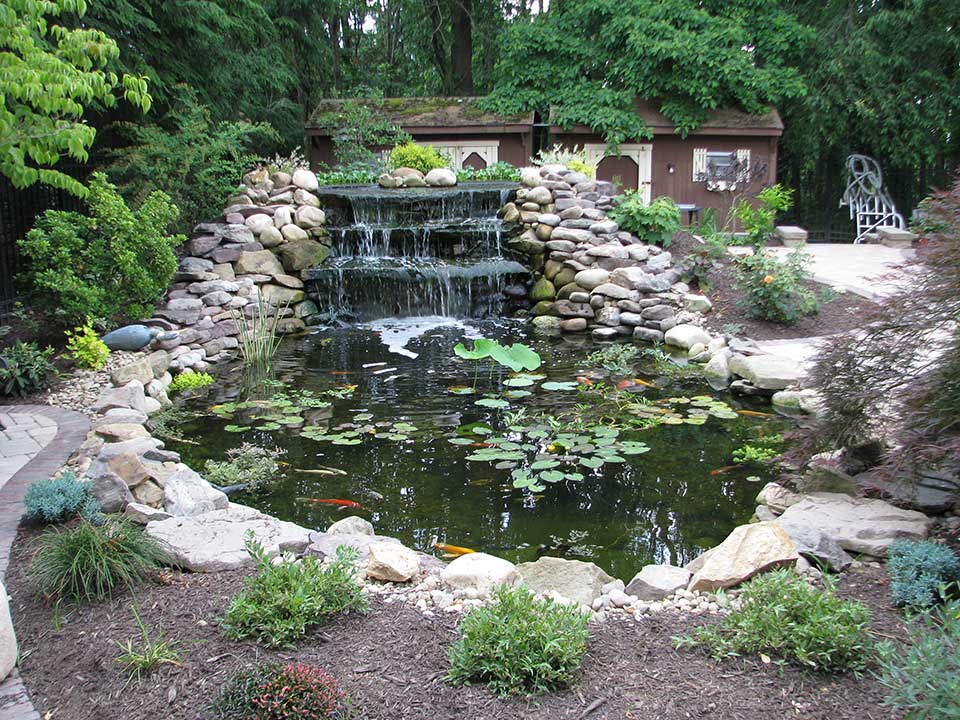
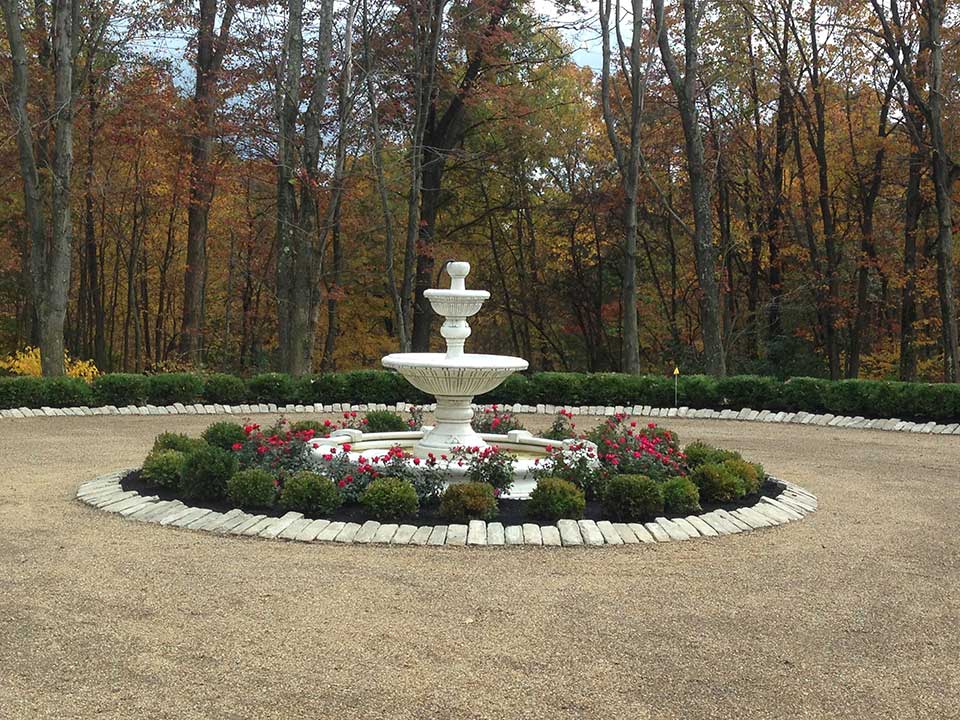
Outdoor Fountains
A well-placed fountain can transform an ordinary backyard into a relaxing outdoor retreat with the restorative sound and hypnotizing movement of trickling water. A fountain can also serve as a focal point in a front yard, plaza or courtyard.
Outdoor fountains come in a wide range of sizes, styles and materials: prefabricated or custom designed and built. Fountains can be mounted on walls, freestanding, tiered or disappearing. The option you choose will primarily depend on your budget, space availability, maintenance considerations and garden style. A good rule-of-thumb is to use a large fountain as a focal point and a small fountain as an accent element. Wichman Landscape can help you sort through the options and ask the right questions before you install your fountain.
The main factors to consider when choosing the best location for a fountain, including the style of your garden, are whether you want to use your fountain as an accent or a focal point, and the proximity to electricity for operating a water pump & lighting.
Important questions to ask before installing a water fountain, such as how much maintenance will be required and how much sound does it produce.
The characteristics of the most popular fountain materials, including cast stone, fiberglass, ceramic and metal.
The benefits of installing a self-contained fountain, which comes with all the working parts, including the pump and plumbing, enclosed within the unit.
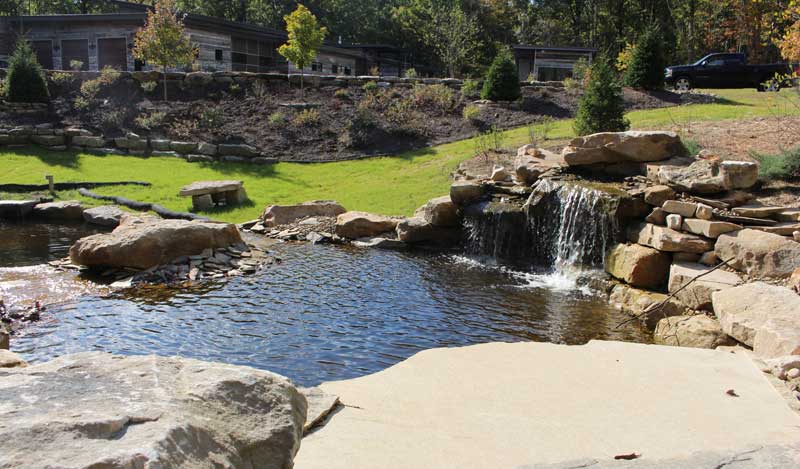
Quality Craftsmanship, Trusted Expertise
Our reputation is built on exceptional craftsmanship, creativity, and attention to detail.
Every project is a blend of precision and artistry—from the careful selection of materials to the unique design elements that make each installation one-of-a-kind. We take pride in delivering a custom outdoor masterpiece that enhances your home’s beauty and functionality.
We work with the finest materials to ensure your installation stands the test of time.
Bringing It All Together with Thoughtful Landscaping
Our team can help you select the perfect plant material to complement your new space, whether it’s lush greenery, colorful blooms, or low-maintenance landscaping that enhances the beauty of your project.

